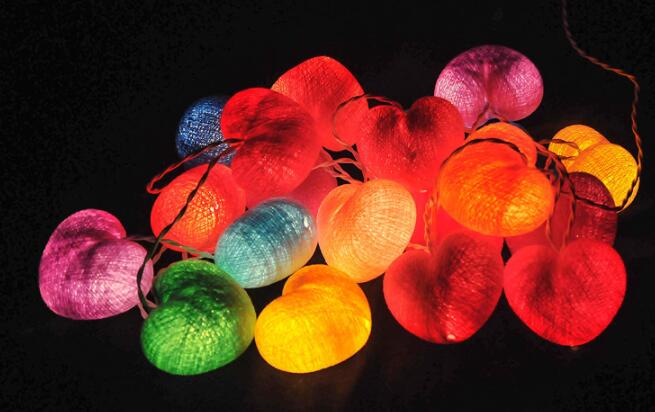Whether it’s a party or Christmas, string lights are a great way to decorate your outdoors. From your bed frame, dining table, and walls to the decks, porches, and trees. String lights can be a great way to illuminate your home.
And even though, they are the best and most affordable way to add some shine and beauty to your space.
There are certain things you should know before you hang out around in your house.
Certainly, it’s quite difficult to install string lights safely and properly when you don’t even know if you can connect them together(and if yes, how many of them) or how to wire string lights together correctly or whether it’s safe to plug them into an extension cord.
Here are some things you should know before you start decorating your home with string lights.

How to Wire String Lights Together?
Whether you want to cover a large area or cover a small area densely, the best practice is to buy connectable string lights that have both male-female plugs at the ends to easily connect multiple light strings.
Start by plugging two strings by using the male socket plug of one and the female end of the other.
Then, wrap up the plugs with electrical tape to secure the connection and prevent moisture from entering the plugs.
Tips to Splice String Lights Together
If you have string lights with you that are damaged, here are tips to splice them together.
1. Unplug and Cover it with Labe Tape
In case you have a string with a damaged portion, unplug and place masking tape on each side about 2 inches on either side of the damage and label those pieces “A” and “B” to ensure you connect the same strands after cutting and repairing the damage.
2. Measure the Barrel and Use a Barrel Connector
Select a barrel connector of around 18-22 gauge.
Measure the thinner portion of the connector’s barrel and using wire strippers remove the insulation of half of the length from the end you’ll be using for splicing.
It allows the thicker portion to house insulated wire while keeping the other half (the bare part away from contact).
3. Use Turnbuckles
Turnbuckles can help in minimizing the torsion from the wind and keeping the spliced connections safe.
Just loop the wires in them and lock them in their place using the wire clamps.
4 Factors Affect How Many String Lights Can I Connect Together?
Whenever you try to connect multiple strings of lights, there are certain factors you should look out for.
1. Type of Light
The type of light you prefer and choose can play a huge role in deciding how many strands can be safely connected together.
I.e. Incandescents light strings are known for being extra cheap, therefore an ideal option for many budget-friendly families.
However, the vintage string lights or the incandescent rope strings can consume anywhere between 3- 10 watts per lightfoot.
On the other hand, LEDs that have comparatively expensive upfront costs have much lower wattage usage per strand (approx 2-3 watts), allowing you to connect more strands together while keeping the electricity bill in check.
2. Circuit
Make sure you are not plugging the light into a circuit that is wet, or already connected with HVAC appliances.
As most of the old homes have old circuit types and wiring in them, get your circuits checked for any electrical issues by an electrician.
To avoid any fire hazard, make sure you only connect multiple strands to a circuit that’s safe and in a dry place.
3. Cord Specifications and its types
Cord specifications and their types can easily let you know how many of them you can connect together. You can typically find this information on packaging.
For example, the net string light can easily be connected from 14 to 21 in one outlet.
The famous LED mini-lights can be connected around 40-50+ strands together.
However, if you can’t find the specs or don’t have the packaging with you, then you can calculate the max wattage to determine the number of connections yourself.
4. Max Wattage
Most American households have circuits with 15-20 amps and an average of 120 volts in them.
To calculate the max wattage of your circuit, all you have to do is check the amps and multiple them with the volts:
15 amp circuit– 15×120=1800 watts
20 amp circuit– 20×120=2400 watts
With the above calculations, you can easily see that a 15 amp circuit can handle around 1800 watts max and the 20 amp can handle 2400.
However, many electricians recommend that sting lights should never exceed more than 80% of the home’s max wattage capacity to ensure that you don’t blow a fuse or cause a fire.
Therefore, for a 15 amp circuit, don’t go above 1440 watts and for a 20 amp circuit, keep it below 1920 watts.
For example,
For an average incandescent light string that uses 100 watts per string, you can safely connect 1440/100=14.4, 14 light strings together.
On the other hand, for an LED string that uses around 10- 30 watts per string,(1440/30 = 48) you can easily connect more than 40 light strings.
FAQs
1. How to Connect String Lights to Power?
You can use the 12 volt light installation method where you connect the light strings to a landscape transformer depending on how much wattage it can handle.
2. How to Connect String Lights to Switch?
You can connect the string lights directly into a GFCI outlet using line installation (120v installation).
Conclusion
As now you know how to wire string lights together and what factors they are dependent on, look at the specification next time you go for buying and get your circuits checked to ensure you can safely decorate and design your home with these shiny strings.
